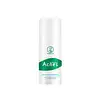What's inside
What's inside
 Key Ingredients
Key Ingredients

 Benefits
Benefits

 Concerns
Concerns

 Ingredients Side-by-side
Ingredients Side-by-side

Water
Skin ConditioningHydrogenated Polyisobutene
EmollientDicaprylyl Carbonate
EmollientButylene Glycol
HumectantPolysorbate 60
EmulsifyingDimethicone
EmollientAmmonium Acryloyldimethyltaurate/Vp Copolymer
Silica
AbrasiveGlyceryl Stearate Citrate
EmollientGlyceryl Acrylate/Acrylic Acid Copolymer
HumectantDimethiconol
EmollientGlycerin
HumectantMethylparaben
PreservativeSorbitol
HumectantO-Cymen-5-Ol
AntimicrobialBetaine
HumectantDisodium EDTA
Propylene Glycol
HumectantChondrus Crispus Extract
Skin ConditioningButyl Avocadate
Skin ConditioningArginine
MaskingParfum
MaskingPropylparaben
PreservativeAlcohol
AntimicrobialPvm/Ma Copolymer
Emulsion StabilisingPhenoxyethanol
PreservativeCentella Asiatica Extract
CleansingAloe Barbadensis Leaf Juice
Skin ConditioningLecithin
EmollientPrunus Cerasus Extract
AntioxidantPyrus Malus Juice
Skin ConditioningChlorphenesin
AntimicrobialOpuntia Streptacantha Stem Extract
HumectantSalicylic Acid
MaskingBeta-Glucan
Skin ConditioningCitric Acid
BufferingAmylopectin
Satureja Hortensis Extract
MaskingDextrin
AbsorbentSodium Benzoate
MaskingPotassium Sorbate
PreservativeXanthan Gum
EmulsifyingSodium Dehydroacetate
PreservativeChamomilla Recutita Flower Extract
MaskingAsiaticoside
AntioxidantMadecassic Acid
Skin ConditioningAsiatic Acid
Skin ConditioningEthylhexylglycerin
Skin ConditioningWater, Hydrogenated Polyisobutene, Dicaprylyl Carbonate, Butylene Glycol, Polysorbate 60, Dimethicone, Ammonium Acryloyldimethyltaurate/Vp Copolymer, Silica, Glyceryl Stearate Citrate, Glyceryl Acrylate/Acrylic Acid Copolymer, Dimethiconol, Glycerin, Methylparaben, Sorbitol, O-Cymen-5-Ol, Betaine, Disodium EDTA, Propylene Glycol, Chondrus Crispus Extract, Butyl Avocadate, Arginine, Parfum, Propylparaben, Alcohol, Pvm/Ma Copolymer, Phenoxyethanol, Centella Asiatica Extract, Aloe Barbadensis Leaf Juice, Lecithin, Prunus Cerasus Extract, Pyrus Malus Juice, Chlorphenesin, Opuntia Streptacantha Stem Extract, Salicylic Acid, Beta-Glucan, Citric Acid, Amylopectin, Satureja Hortensis Extract, Dextrin, Sodium Benzoate, Potassium Sorbate, Xanthan Gum, Sodium Dehydroacetate, Chamomilla Recutita Flower Extract, Asiaticoside, Madecassic Acid, Asiatic Acid, Ethylhexylglycerin
Allantoin
Skin ConditioningPyridoxine Hcl
Skin ConditioningWater
Skin ConditioningButylene Glycol
HumectantCyclopentasiloxane
EmollientPolyoxymethylene Melamine
PEG-7 Glyceryl Cocoate
EmulsifyingDimethicone
EmollientDiglycerin
HumectantPolyglyceryl-3 Isostearate
EmulsifyingTocopherol
AntioxidantGlycolic Acid
BufferingPotassium Ascorbyl Tocopheryl Phosphate
AntioxidantRiboflavin
Cosmetic ColorantSodium Hyaluronate
HumectantAcrylic Acid
Polyvinylalcohol Crosspolymer
Xanthan Gum
EmulsifyingSorbitol
HumectantSodium Hydroxide
BufferingMethylparaben
PreservativeAllantoin, Pyridoxine Hcl, Water, Butylene Glycol, Cyclopentasiloxane, Polyoxymethylene Melamine, PEG-7 Glyceryl Cocoate, Dimethicone, Diglycerin, Polyglyceryl-3 Isostearate, Tocopherol, Glycolic Acid, Potassium Ascorbyl Tocopheryl Phosphate, Riboflavin, Sodium Hyaluronate, Acrylic Acid, Polyvinylalcohol Crosspolymer, Xanthan Gum, Sorbitol, Sodium Hydroxide, Methylparaben
Ingredients Explained
These ingredients are found in both products.
Ingredients higher up in an ingredient list are typically present in a larger amount.
Butylene Glycol (or BG) is used within cosmetic products for a few different reasons:
Overall, Butylene Glycol is a safe and well-rounded ingredient that works well with other ingredients.
Though this ingredient works well with most skin types, some people with sensitive skin may experience a reaction such as allergic rashes, closed comedones, or itchiness.
Learn more about Butylene GlycolDimethicone is a type of synthetic silicone created from natural materials such as quartz.
What it does:
Dimethicone comes in different viscosities:
Depending on the viscosity, dimethicone has different properties.
Ingredients lists don't always show which type is used, so we recommend reaching out to the brand if you have questions about the viscosity.
This ingredient is unlikely to cause irritation because it does not get absorbed into skin. However, people with silicone allergies should be careful about using this ingredient.
Note: Dimethicone may contribute to pilling. This is because it is not oil or water soluble, so pilling may occur when layered with products. When mixed with heavy oils in a formula, the outcome is also quite greasy.
Learn more about DimethiconeMethylparaben is a preservative and is a paraben. It is used to prevent the growth of fungus, mold, and other harmful bacteria. Parabens are chemicals used as preservatives in both cosmetics and food.
Methylparaben can be synthetically created. It can also be found naturally in some fruits, such as blueberries.
Oftentimes, Methylparaben is combined with other parabens to help increase the shelf life.
The safety of Methylparaben is currently being studied. While ongoing studies are looking into the safety of parabens, the results have been very mixed. Some studies have not found Methylparaben to be harmful.
Learn more about MethylparabenSorbitol is a sugar alcohol. It is a hydrating and moisturizing agent created from the reduction process of glucose.
Most sorbitol is usually made from potato starch. It is also found in fruits such as apples and pears.
As a humectant, Sorbitol helps draw water to the skin. This helps keep the skin hydrated. Sorbitol also helps create a thicker texture in products. You might find sorbitol in your toothpaste and other gels.
It is a non-irritating ingredient that is great for those with dry skin.
Sorbitol is a prebiotic. It helps promote the growth of healthy bacteria on your skin. The bacteria on your skin form a microbiome. This microbiome helps protect your skin from infection and harmful bacteria.
Learn more about SorbitolWater. It's the most common cosmetic ingredient of all. You'll usually see it at the top of ingredient lists, meaning that it makes up the largest part of the product.
So why is it so popular? Water most often acts as a solvent - this means that it helps dissolve other ingredients into the formulation.
You'll also recognize water as that liquid we all need to stay alive. If you see this, drink a glass of water. Stay hydrated!
Learn more about WaterXanthan gum is used as a stabilizer and thickener within cosmetic products. It helps give products a sticky, thick feeling - preventing them from being too runny.
On the technical side of things, xanthan gum is a polysaccharide - a combination consisting of multiple sugar molecules bonded together.
Xanthan gum is a pretty common and great ingredient. It is a natural, non-toxic, non-irritating ingredient that is also commonly used in food products.
Learn more about Xanthan Gum